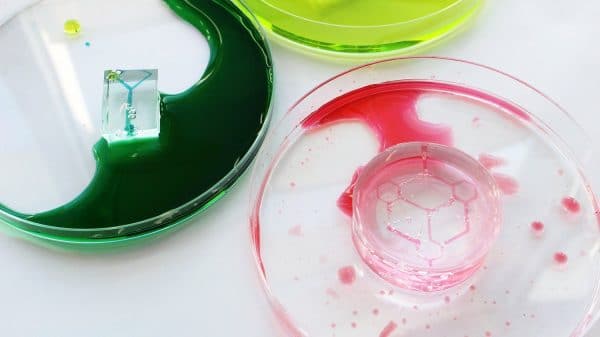
Bioprinting with Corning Matrigel Matrix
After 30 years of discoveries and over 10,000 citations, Corning® Matrigel® matrix has cemented its place as a trusted ECM in labs worldwide. Biologists, tissue engineers, and industry giants alike rely

After 30 years of discoveries and over 10,000 citations, Corning® Matrigel® matrix has cemented its place as a trusted ECM in labs worldwide. Biologists, tissue engineers, and industry giants alike rely

We’re proud to announce that we have finally achieved the ability to pattern pure collagen in an automated fashion. With our proprietary CORE™ printhead and our new Tissue Layering Protocol, you

We’re happy to announce the newest addition to our growing library of bioink protocols – the Allevi Coaxial Kit. This new bioink kit allows users with an Allevi 2 or

We are excited to launch the Allevi Vascularization Protocol. This method empowers you to replicate some of the most complex vascular trees in an easy way. It enables you to

Gelatin Methacrylate (GelMA) is a popular material in bioprinting due to its mechanical properties and printability. The methacrylate groups in this bioink mean that you are able to cure the

One of the largest hurdles of in vitro cell culture has been to mimic conditions that closely resemble in vivo outcomes, essentially imitating nature. Significant strides have been made to this end in the

Organ-on-a-chip technology, developed by the Wyss Institute at Harvard, has had a revolutionary impact on the field of tissue engineering by allowing the creation of models that mimic organ function and model

Our bodies contain a highway of integrated electrical communication called the nervous system. It helps regulate our movements, emotions, and even thoughts by having electricity chemically run across conductive tissue.

At Allevi, our goal is to build tools that will allow scientists to explore questions in 3D culture. Yet, while this approach brings us closer to achieving the physiological microenvironments

We’ve talked about what bioprinting entails in general. We’ve touched on the types of cells that we can incorporate into bioprinted constructs. We’ve also discussed the potential of this technology